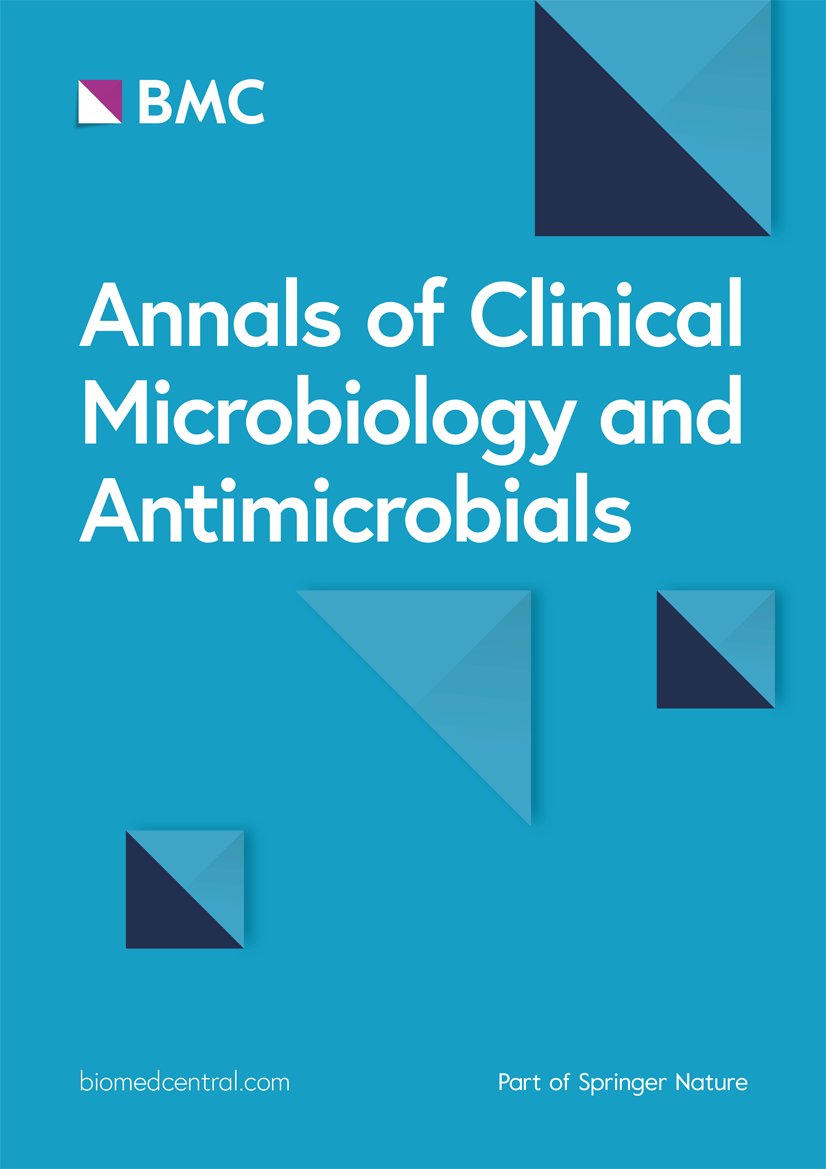Performances of two rapid LAMP-based techniques for the intrapartum detection of Group B Streptococcus vaginal colonization
IF 4.6
2区 医学
Q1 MICROBIOLOGY
Annals of Clinical Microbiology and Antimicrobials
Pub Date : 2024-04-25
DOI:10.1186/s12941-024-00695-2
引用次数: 0
Abstract
Group B Streptococcus (GBS) is the leading cause of invasive infections in newborns. The prevention of GBS neonatal disease relies on the administration of an intrapartum antibiotic prophylaxis to GBS-colonized women. In recent years, rapid intrapartum detection of GBS vaginal colonization using real-time nucleic acid amplification tests (NAATs) emerged as an alternative to antenatal culture screening methods. We compared the performances of two loop-mediated isothermal amplification (LAMP) tests, the Ampliflash® GBS and the PlusLife® GBS tests, to standard culture for GBS detection in vaginal specimens from pregnant women. The study was conducted from April to July 2023 in a French hospital of the Paris area. A total of 303 samples were analyzed, including 85 culture-positive samples (28.1%). The Ampliflash® GBS test and the PlusLife® GBS tests gave a result for 100% and 96.3% tests, respectively. The performances of the tests were as follows: sensitivity 87.1% (95% confidence interval (CI) 78.3–92.6) and 98.7% (95% CI 93.0-99.8), specificity 99.1% (95% CI 96.7–99.8), and 91.9% (95% CI 87.3–95.0), respectively. False negative results of the Ampliflash® GBS test correlated with low-density GBS cultures. Time-to-results correlated with GBS culture density only for the PlusLife® GBS test (p < 0.001). Both techniques provide excellent analytical performances with high sensitivity and specificity together with a short turnaround time and results available in 10 to 35 min. Their potential to further reduce the burden of GBS neonatal disease compared with antenatal culture screening needs to be assessed in future clinical studies.基于 LAMP 的两种产前快速检测 B 群链球菌阴道定植技术的性能
B 组链球菌(GBS)是导致新生儿侵入性感染的主要原因。预防 GBS 新生儿疾病主要依靠对 GBS 定植的产妇进行产前抗生素预防。近年来,使用实时核酸扩增试验(NAATs)快速检测产前 GBS 阴道定植成为产前培养筛查方法的一种替代方法。我们比较了 Ampliflash® GBS 和 PlusLife® GBS 这两种环路介导等温扩增(LAMP)检验与标准培养法在孕妇阴道标本中检测 GBS 的性能。这项研究于 2023 年 4 月至 7 月在巴黎地区的一家法国医院进行。共分析了 303 份样本,包括 85 份培养阳性样本(28.1%)。Ampliflash® GBS 检测试剂盒和 PlusLife® GBS 检测试剂盒的检测结果分别为 100% 和 96.3%。这两种检测方法的灵敏度分别为 87.1%(95% 置信区间为 78.3-92.6)和 98.7%(95% 置信区间为 93.0-99.8),特异性分别为 99.1%(95% 置信区间为 96.7-99.8)和 91.9%(95% 置信区间为 87.3-95.0)。Ampliflash® GBS 检验的假阴性结果与低密度 GBS 培养相关。只有 PlusLife® GBS 检验的结果出现时间与 GBS 培养密度相关(p < 0.001)。这两种技术都具有出色的分析性能,灵敏度和特异性高,周转时间短,可在 10 至 35 分钟内得到结果。与产前培养筛查相比,这两种技术在进一步减少新生儿 GBS 疾病负担方面的潜力需要在未来的临床研究中进行评估。
本文章由计算机程序翻译,如有差异,请以英文原文为准。
求助全文
约1分钟内获得全文
求助全文
来源期刊

Annals of Clinical Microbiology and Antimicrobials
MICROBIOLOGY-
CiteScore
8.60
自引率
0.00%
发文量
49
审稿时长
>12 weeks
期刊介绍:
Annals of Clinical Microbiology and Antimicrobials considers good quality, novel and international research of more than regional relevance. Research must include epidemiological and/or clinical information about isolates, and the journal covers the clinical microbiology of bacteria, viruses and fungi, as well as antimicrobial treatment of infectious diseases.
Annals of Clinical Microbiology and Antimicrobials is an open access, peer-reviewed journal focusing on information concerning clinical microbiology, infectious diseases and antimicrobials. The management of infectious disease is dependent on correct diagnosis and appropriate antimicrobial treatment, and with this in mind, the journal aims to improve the communication between laboratory and clinical science in the field of clinical microbiology and antimicrobial treatment. Furthermore, the journal has no restrictions on space or access; this ensures that the journal can reach the widest possible audience.
 求助内容:
求助内容: 应助结果提醒方式:
应助结果提醒方式:


